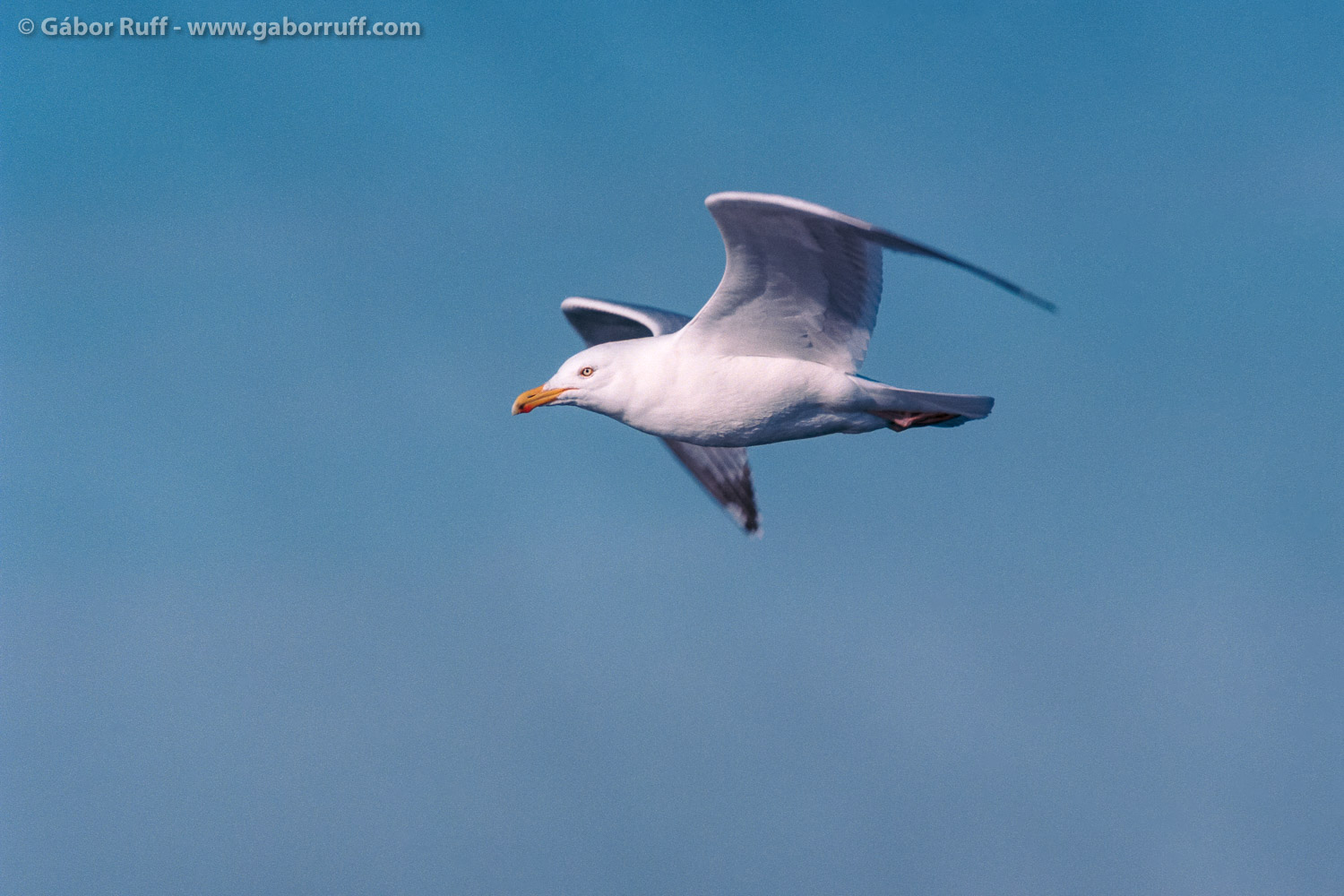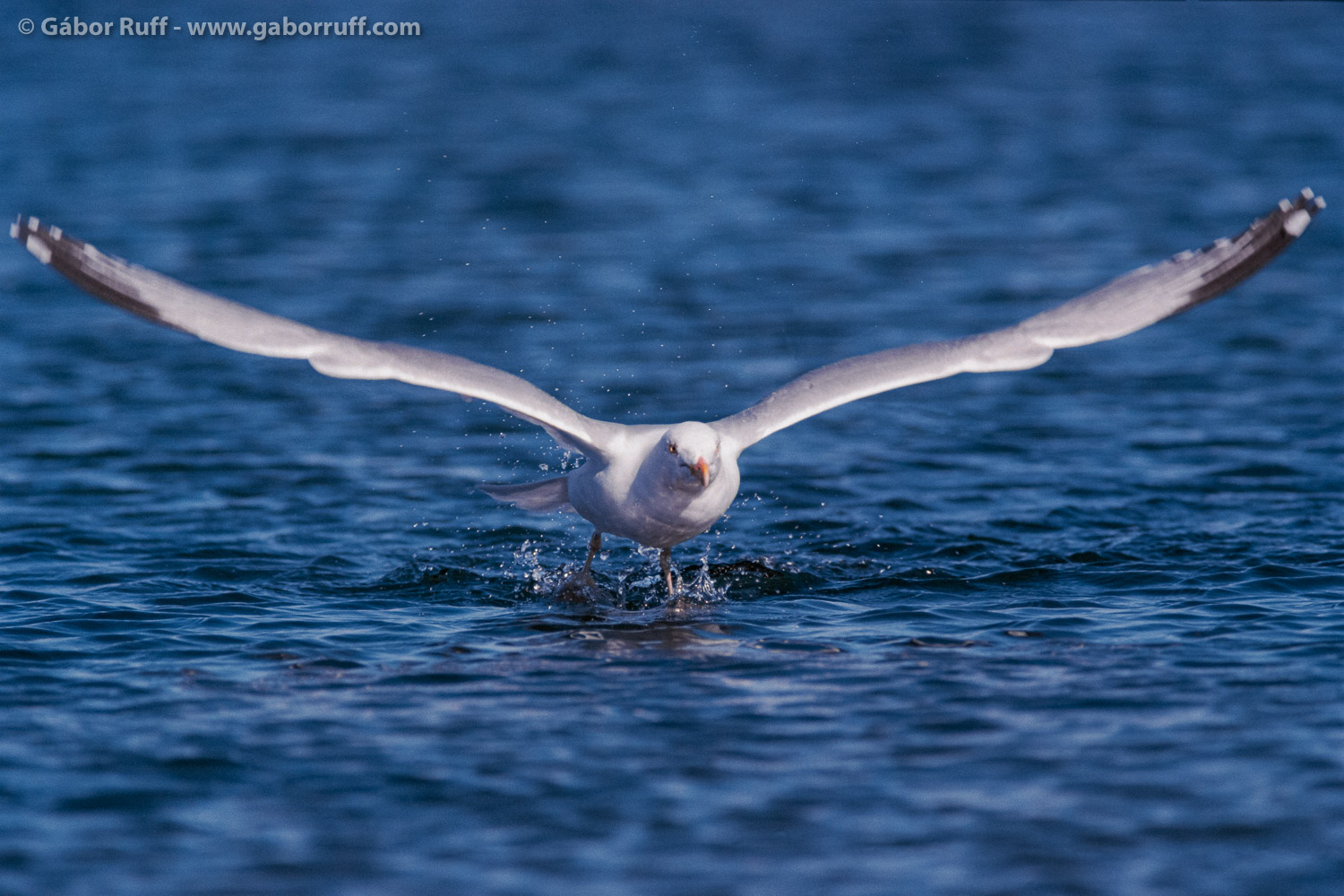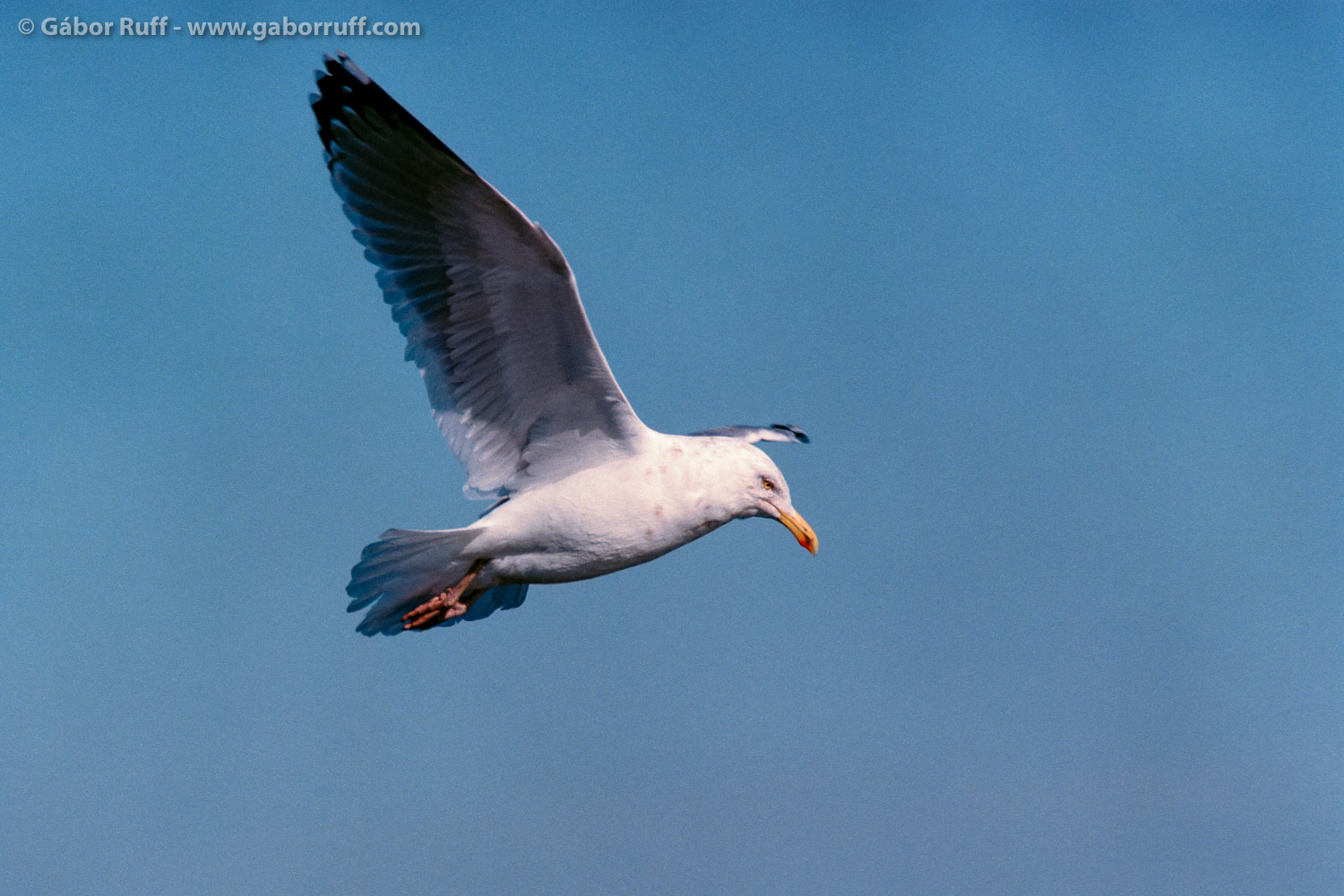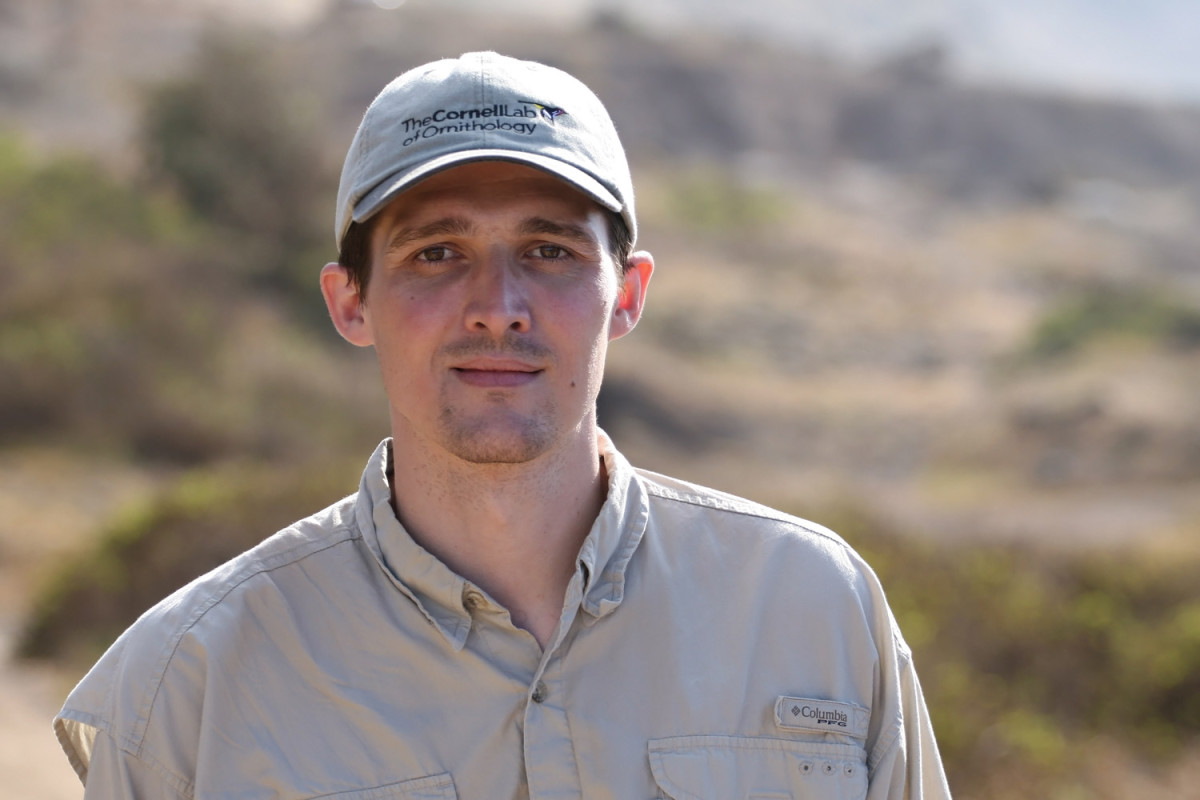Last week, I finally had an opportunity to test my Canon EOS-1 film camera. I wanted to photograph birds so I could test the autofocus system of this relatively old camera. I went to the Silver Sands State Park (map) to shoot seagulls in flight. This state park is located on Long Island Sound in the city of Milford, Connecticut and it has over a half mile of shoreline with dunes where birds like to forage and nest. One of the most unique features of the park is Charles Island. During low tide, you can walk across the sand bar to this island, except when birds are nesting on the island. This sand bar is a favorite place of gulls and other shorebirds when the tide recedes and gives the birds plenty of opportunities to find food and also a lot of chances for nature photographers to take pictures of them. I spent about an hour on the sand bar and tried to photograph the flying gulls from it. There was enough light so I decided to use Kodak Ektar 100 film to get vivid colors. I put my 300mm f/4 lens with a 1.4x teleconverter on my Canon EOS-1 and photographed the birds handheld. I set the aperture to F8 to increase depth of field and I used evaluative metering mode (matrix mode). The shutter speed was usually between 1/250 and 1/500 sec. The autofocus setting was easy, since there’s not much you can change. One of the reasons I wanted this old camera is that it doesn’t have too many settings so I can focus more on the subjects and the final result depends a little more on my skills than solely on the gear I use. The Canon EOS-1 has only one AF point and two AF modes. I used AI Servo, which is the continuous mode in Canon’s language and I set the camera to back button focus mode. It was obviously a little more difficult to track the birds and keep the AF point on their heads, but it’s not impossible. To be honest, I’m very pleased with this old camera’s AF system. I had to work a little harder than with today’s cameras, but this 30 year-old Canon EOS-1 worked perfectly.

I set the camera to continuous shooting mode, but I didn’t shoot any series, I just tried to track the birds and took only one picture when I felt it’s the right time. It worked, as it should and I shot the entire roll this way on flying gulls. Unfortunately, as you can see in the picture above, the lab messed up my roll of film. Those diagonal stripes are probably from the developer chemical as flowed through the sprocket holes of the film resulting the inconsistent processing. I’m afraid I have to find another lab or maybe I should develop the film myself. Fortunately, it can only be seen on photos with the sky in the background.

The birds I photographed are herring gulls (Larus argentatus). This is a large bird and it’s the most common gull of the North Atlantic. Its diet includes fish and marine invertebrates such as crabs, mussels, and squid. These gulls are fast flyers, but sometimes they hover for a second or two before dipping underwater to catch their food so photographing them needs fast reflexes and fast AF too. Based on my first experience with the Canon EOS-1, it seems to be a great action camera for analog bird and wildlife photography.


